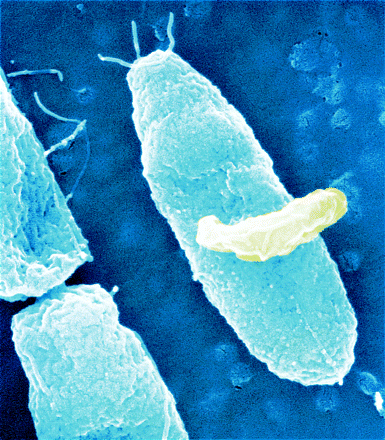Predatory bacteria offer potential solution to drug resistance problem

For the first time ever, scientists have used predatory bacteria to kill pneumonia in a rat animal model. The research, published online in mBio, provides evidence that predatory bacteria can be used as a therapeutic, offering a possible solution to the rise of multidrug-resistant bacterial infections.
The issue of multidrug-resistance and the lack of antibiotics in the development pipeline have spurred researchers to pursue new ways to combat bacterial infections. Using naturally occurring predatory bacteria, such as Bdellovibrio bacteriovorus and Micavilbrio aeruginosavorus, is one possibility. "Predatory bacteria is one of the new therapeutic approaches that people are starting to look at," said lead author of the new study Daniel Kadouri, PhD, associate professor of microbiology at Rutgers School of Dental Medicine.
Bacteria that require a prey to finish their life cycle are called predatory bacteria. In the environment, most Bdellovibrio invade a microbial prey cell, secrete enzymes that break down the cell, and then use the free floating proteins and nucleic acids for its own nutrient source. Micavilbrio attaches to its prey from the outside and sucks the cells dry like a vampire. [Transmission electron micrograph of Pseudomonas aeruginosa (blue) growing on a plastic surface being attacked by the extracellular bacterial predator Micavibrio aeruginosavorus (yellow). (Electron micrograph courtesy of D. Kadouri; image colorization by G. A. O'Toole.)]
Several years ago, Dr. Kadouri and colleagues set out to investigate whether they could culture predatory bacteria and use them for therapeutics. "There are probably numerous different predatory bacteria that can affect other bacteria," said Dr. Kadouri. "We are looking at the ones that can attack organisms that are harmful to humans." Previously, the researchers demonstrated that predatory bacteria are nontoxic in mice and rabbits. They also showed that the bacteria can attack human pathogens of interest and that, in vitro, they were not harmful to human cells.
In the new study, researchers introduced sub-lethal concentrations of Klebsiella pneumonia into the lungs of rats via intranasal inoculation and followed with multiple doses of predatory bacteria over 24 hours. The predatory bacteria were able to reduce the pneumonia burden by more than 99.9% in the lungs of most rats and it was harmless to the rats. "There were no adverse effects on the animal. There was no type of histological tissue damage or signs of sustainable inflammation," said Dr. Kadouri. "They were perfectly healthy."
Dr. Kadouri said the next question to investigate is whether or not the effect is sustained. "We don't know what happens after longer time points, whether the pneumonia will rebound," said Dr. Kadouri.
Work is also underway to test the ability of predatory bacteria to treat eye infections and wound infections in animal models. "When we get that data, it will give us a good idea of whether or not it is effective enough to go into clinical trials. At this point, I think we can make a very strong case that it is safe," said Dr. Kadouri.
If the research pans out, Dr. Kadouri believes predatory bacteria could be used in concert with other therapeutics. "If you have a patient who is heavily infected, antibiotics will not be efficient because the bioload is too high, so the idea is that you would hit the infection with predatory bacteria, compromise the infection, and then use antibiotics or perhaps enough of the infection would be removed that the immune system could kick in," said Dr. Kadouri.
More information: Kenneth Shatzkes et al. Predatory Bacteria AttenuateBurden in Rat Lungs, mBio (2016). DOI: 10.1128/mBio.01847-16
Journal information: mBio
Provided by American Society for Microbiology


















